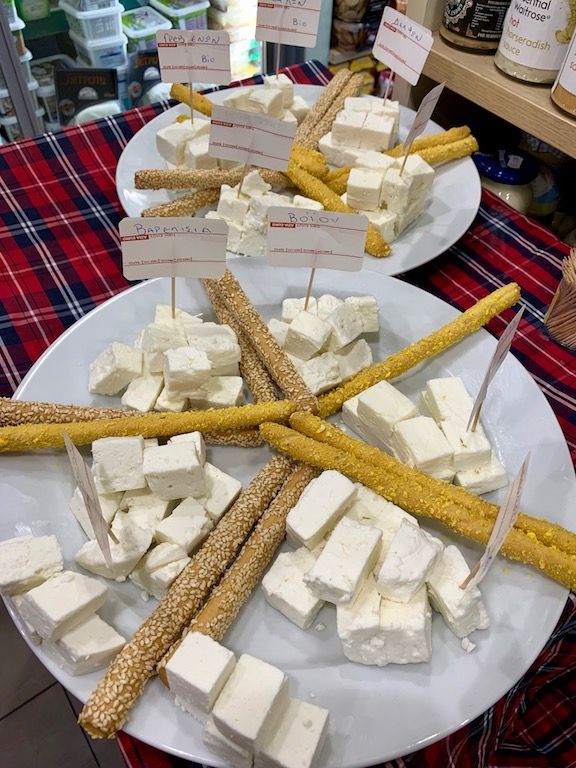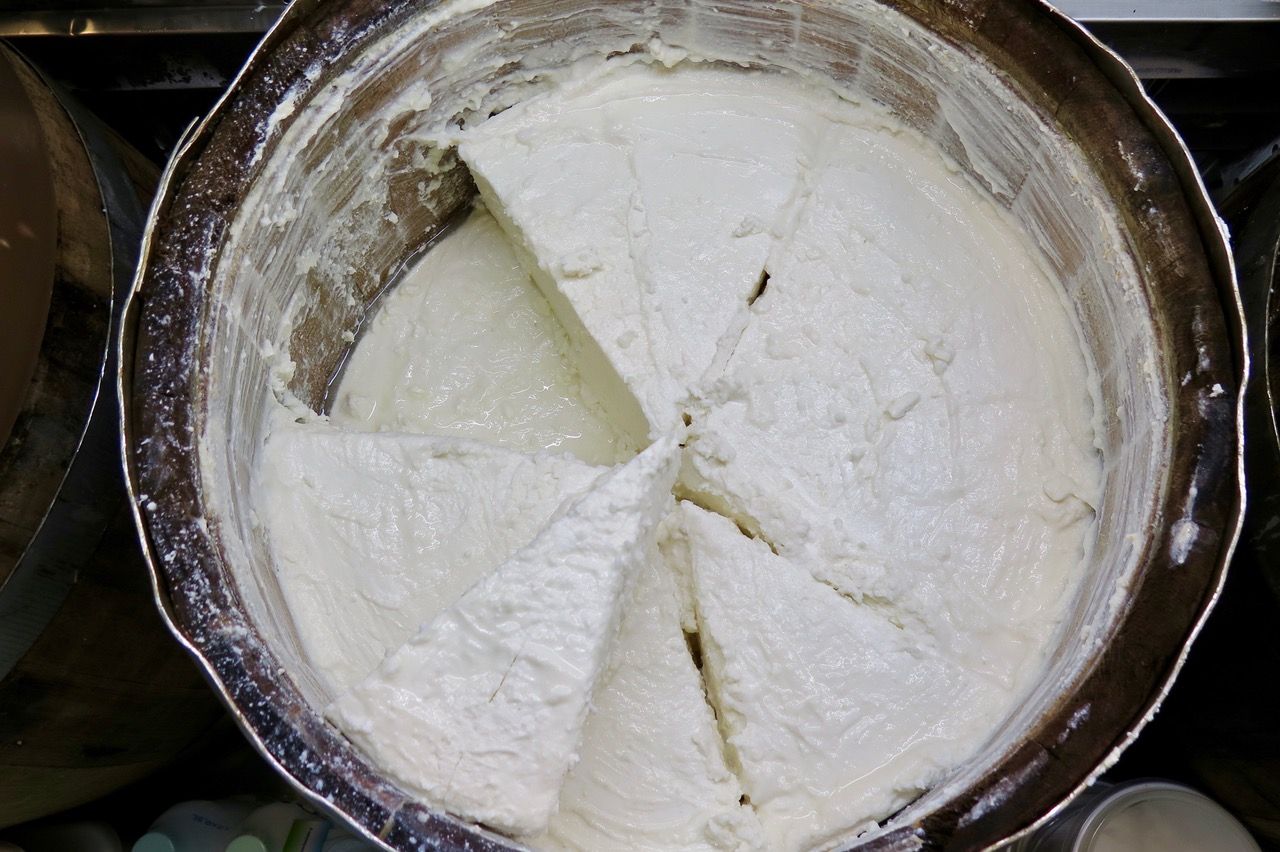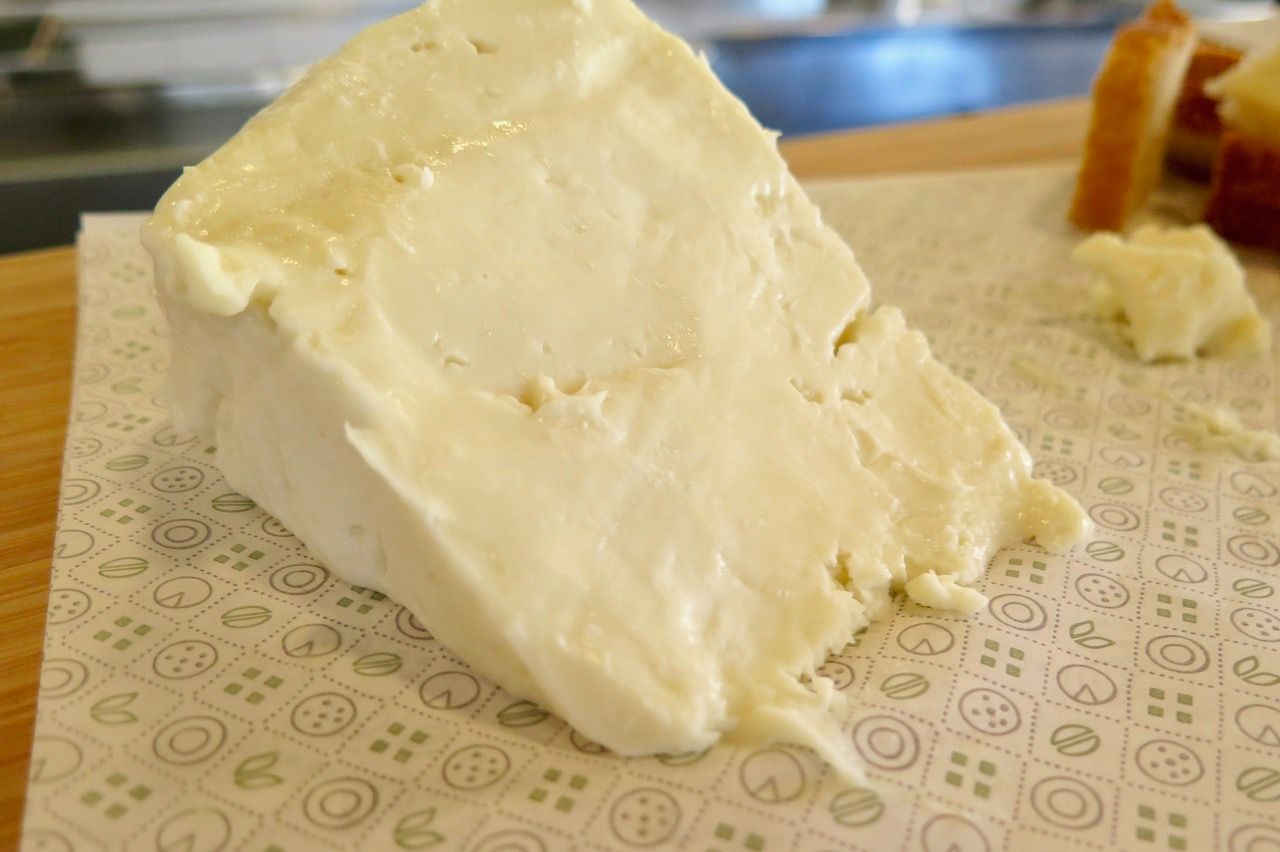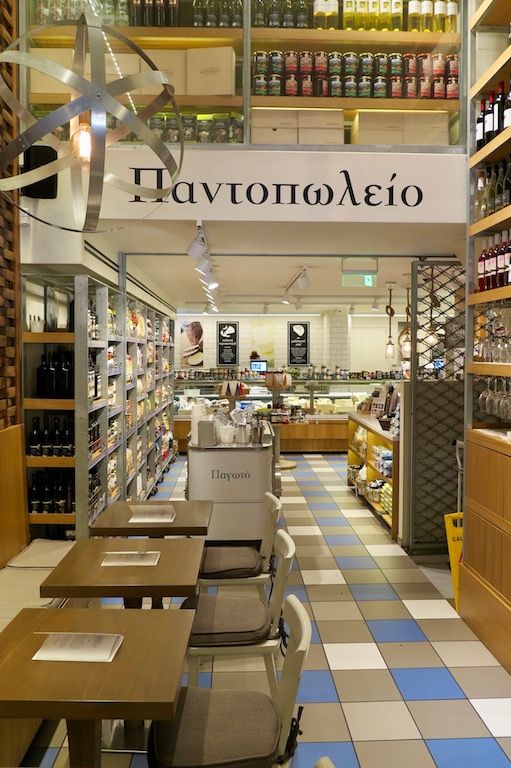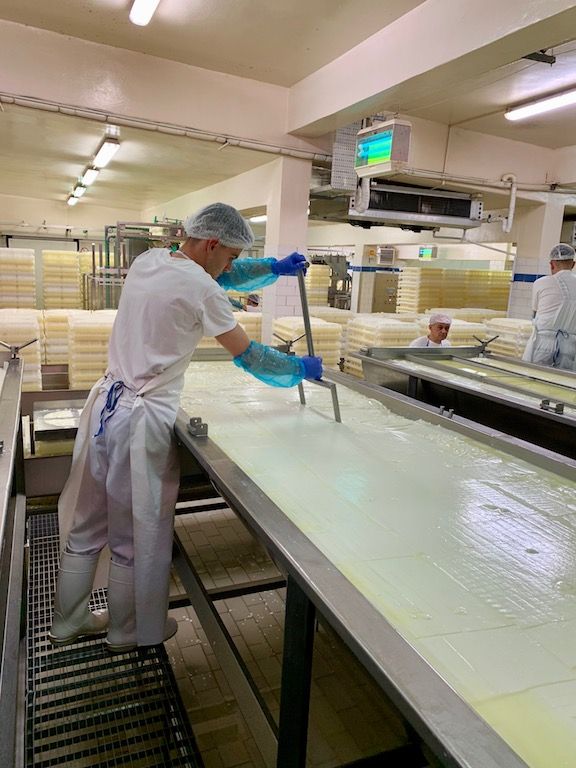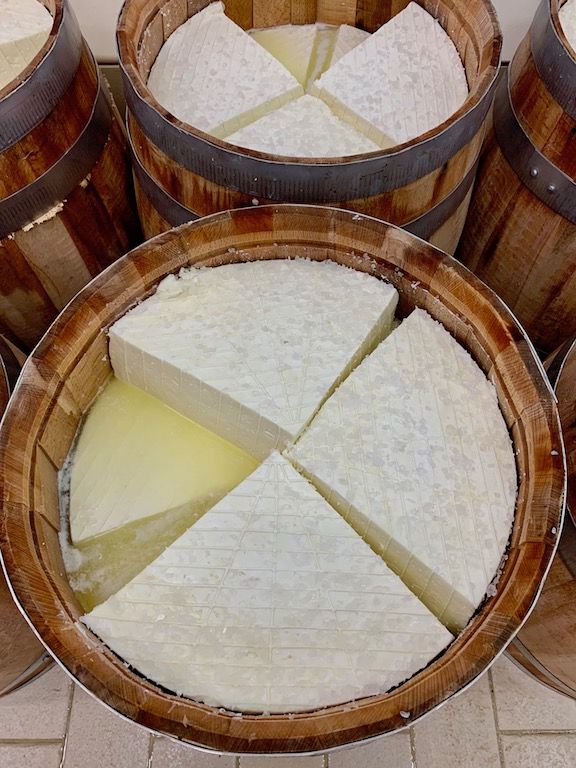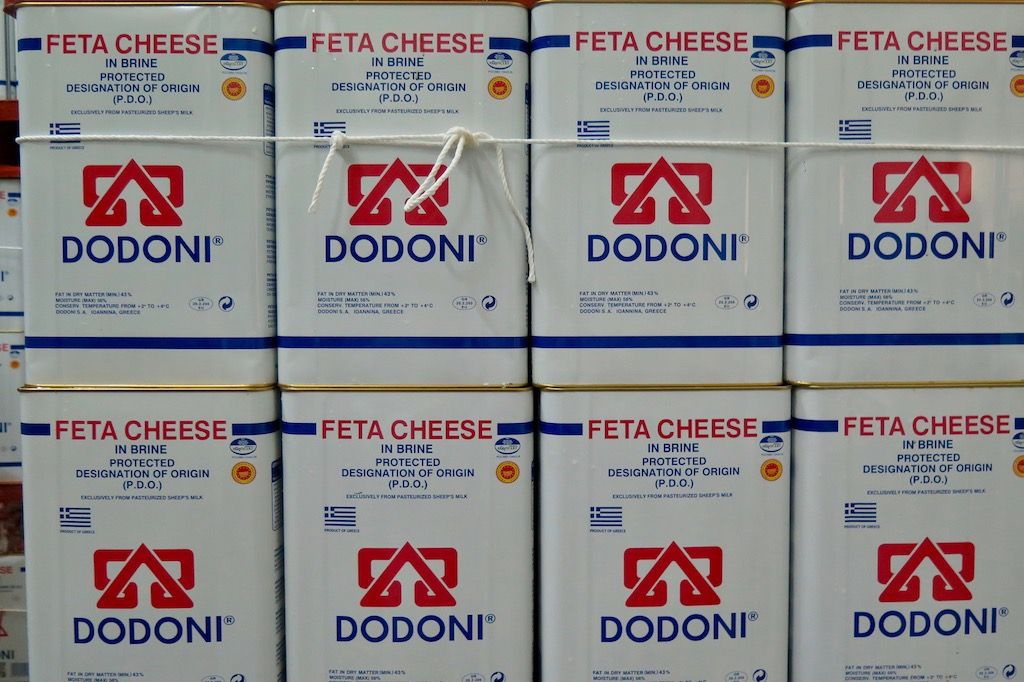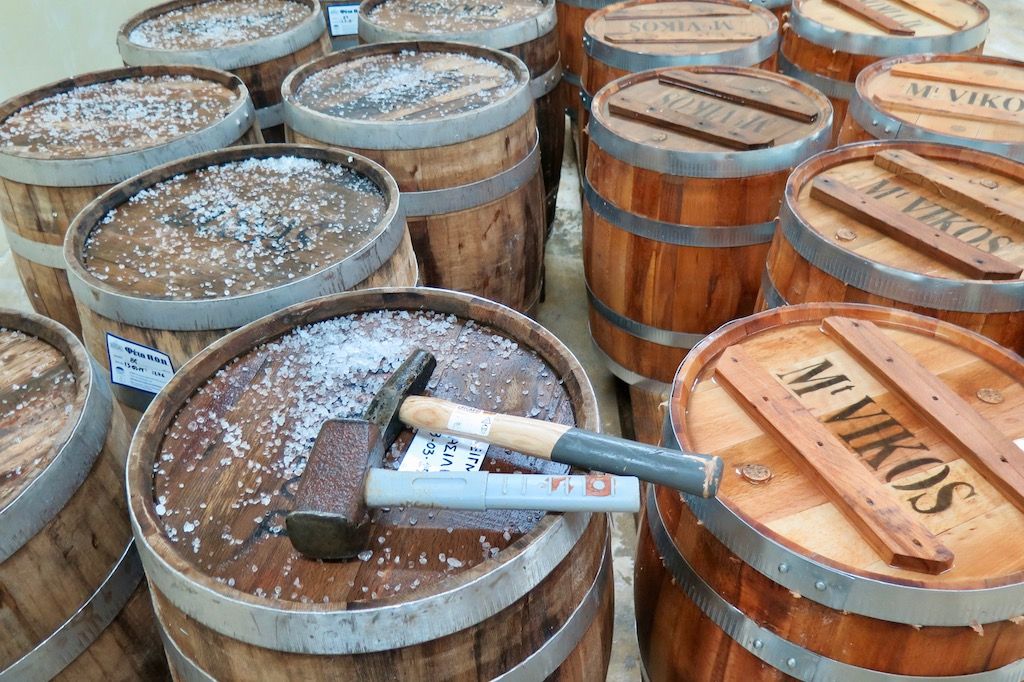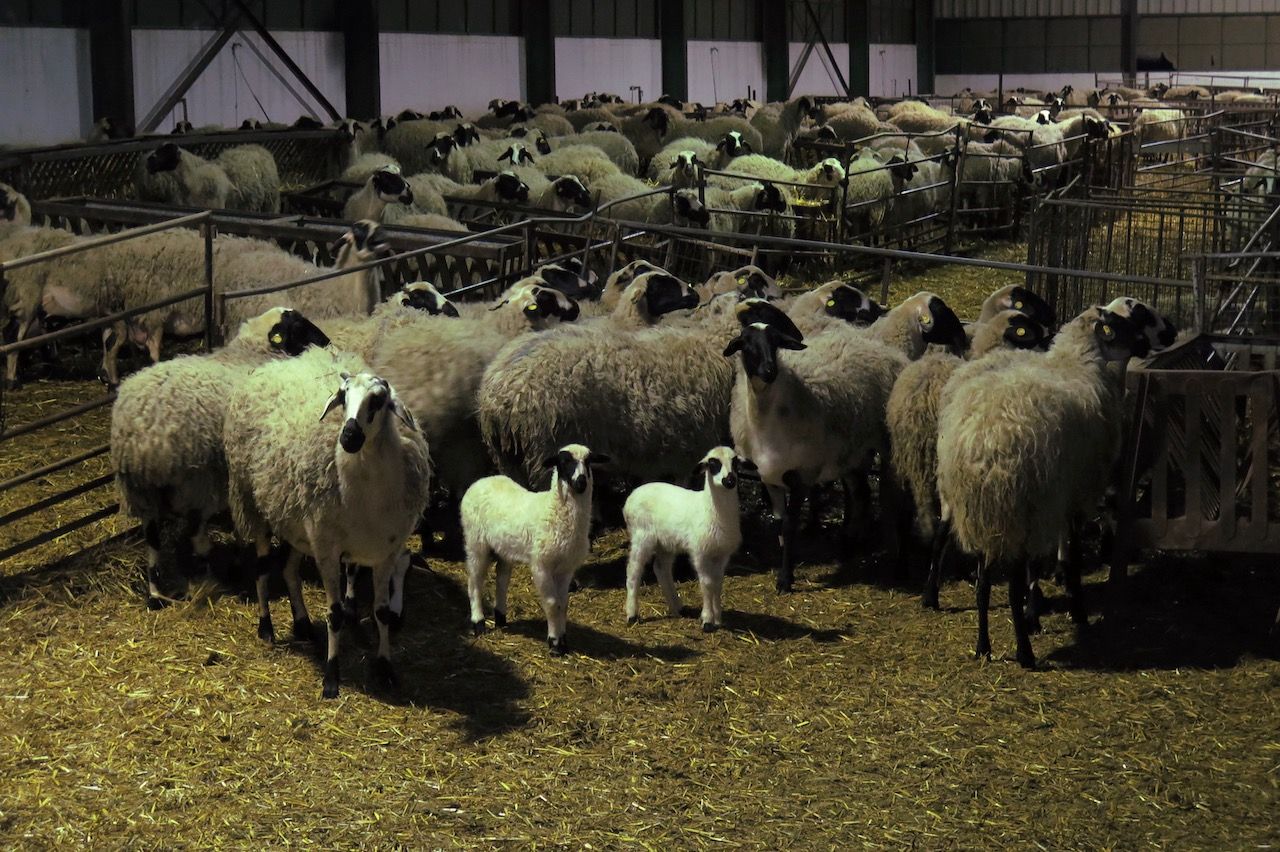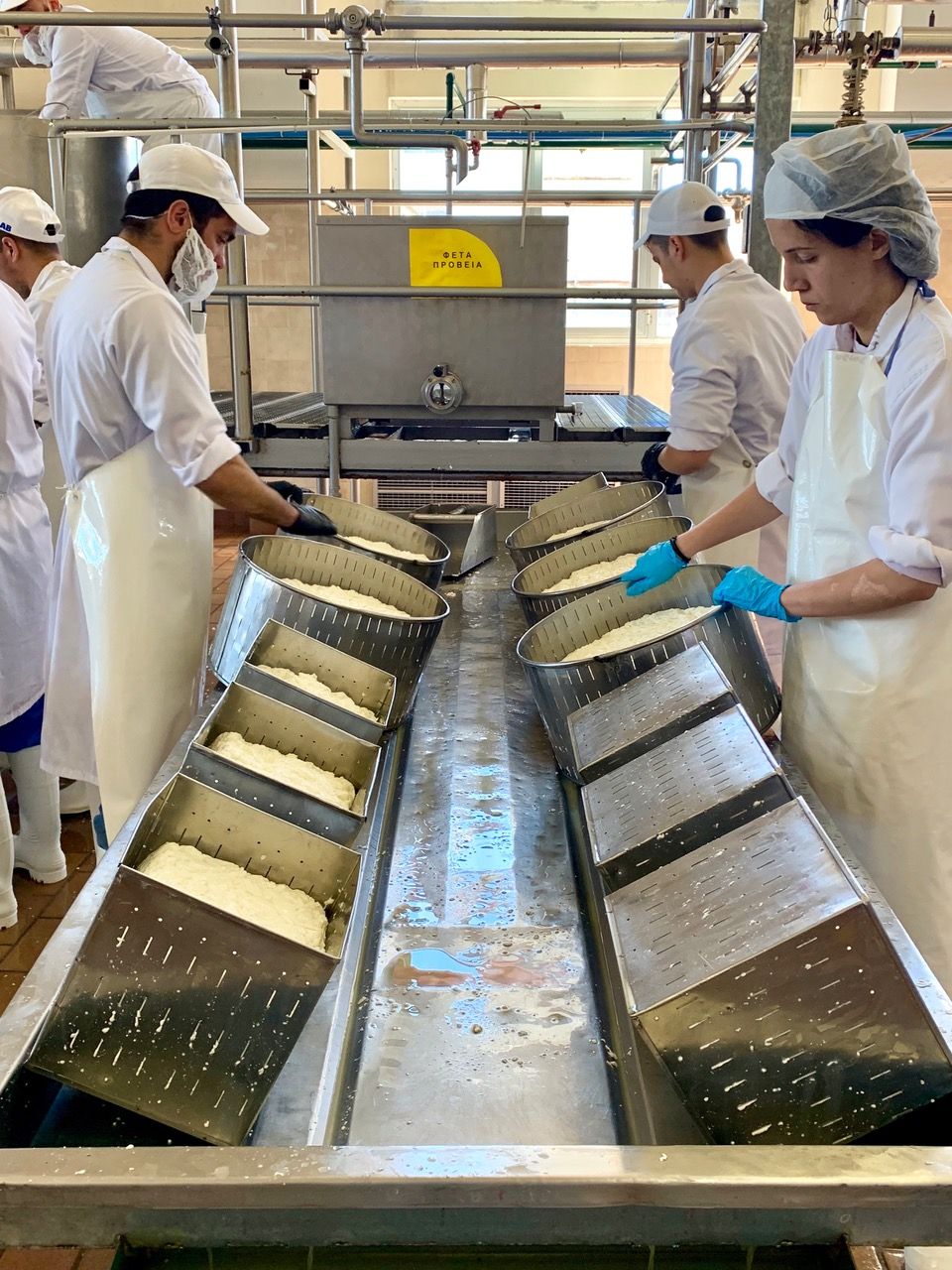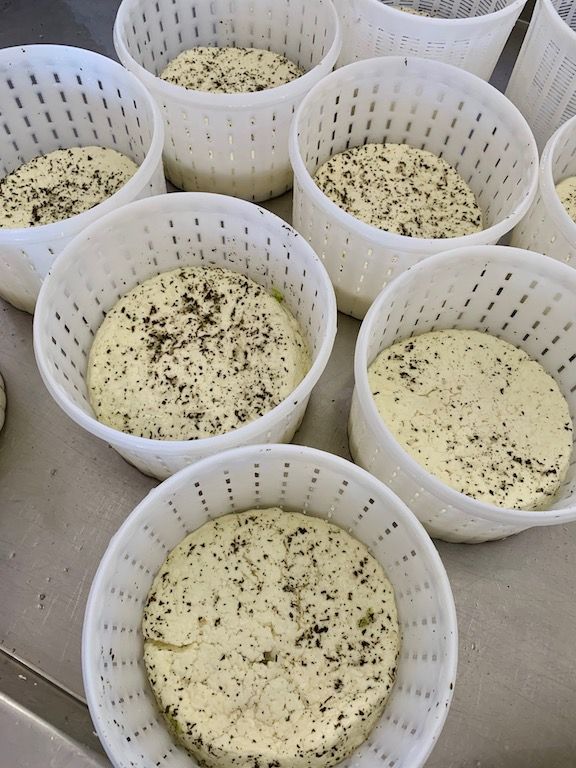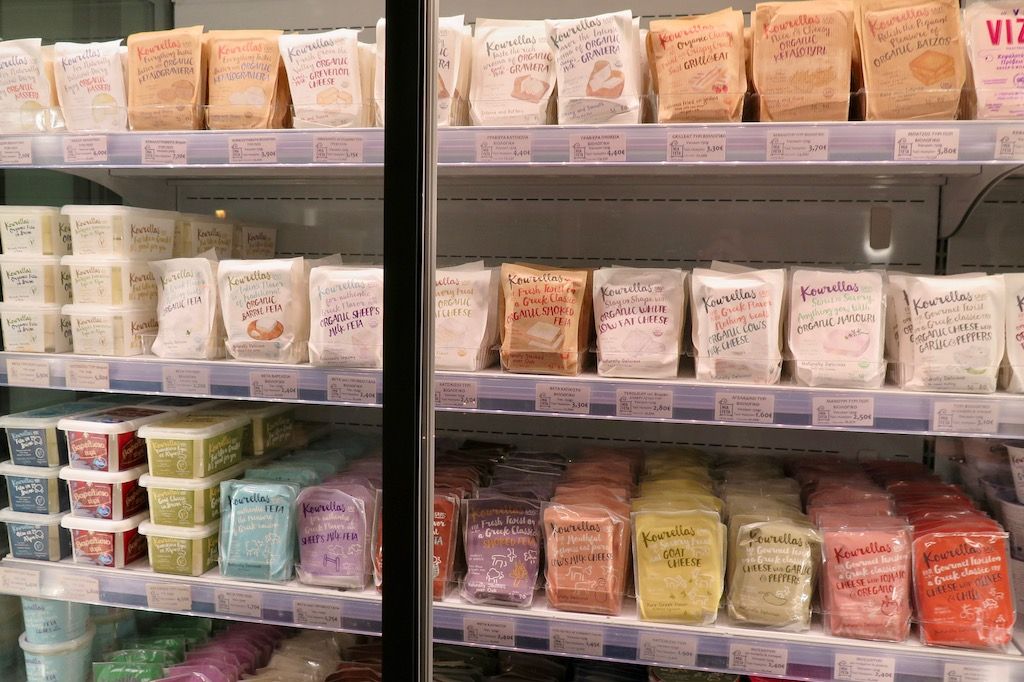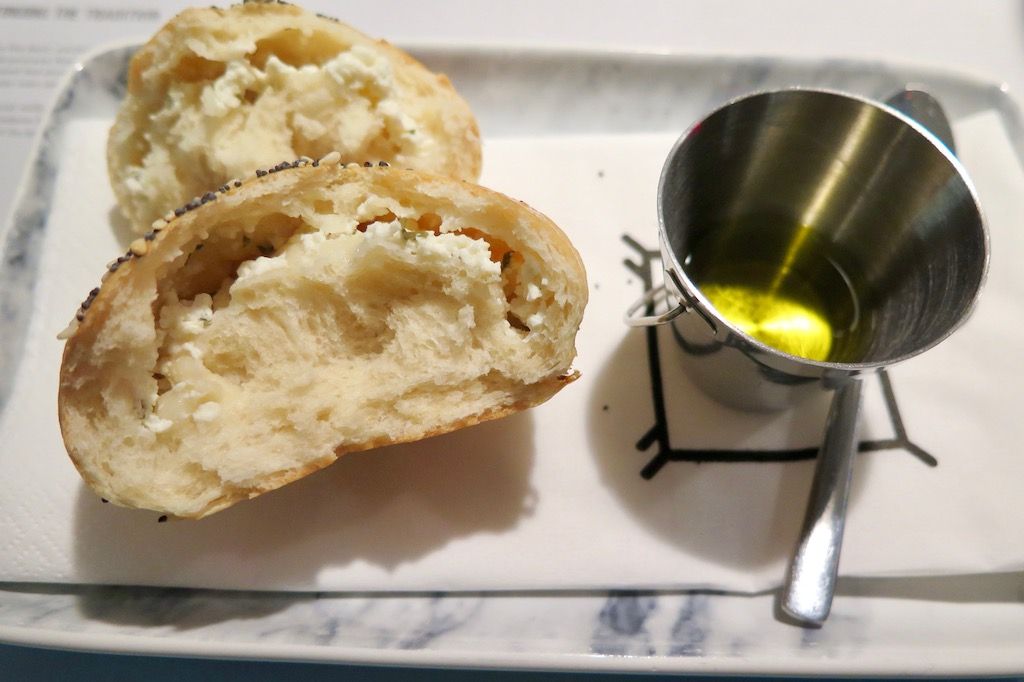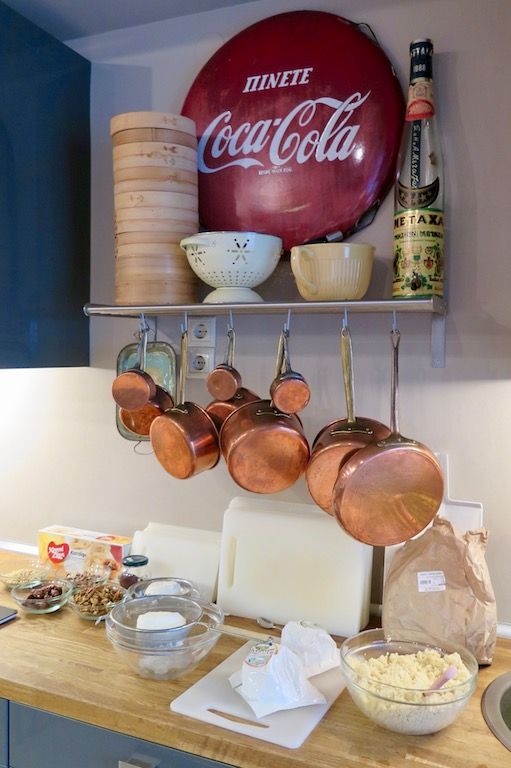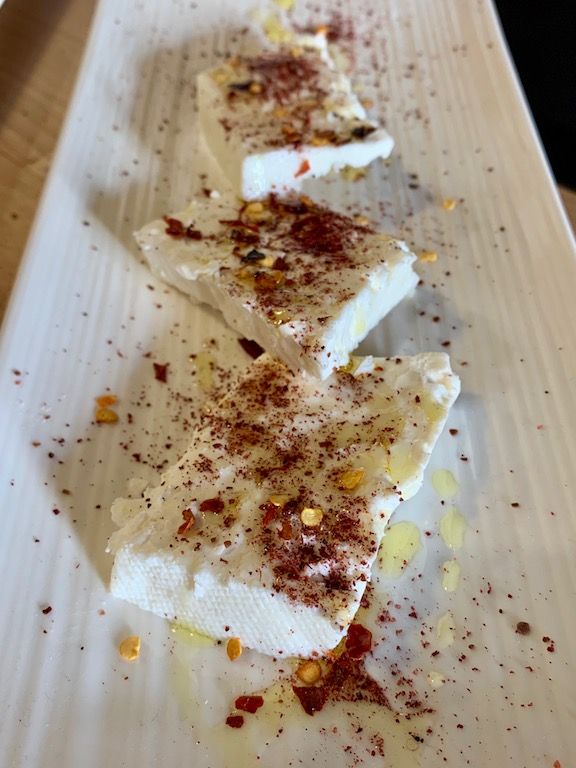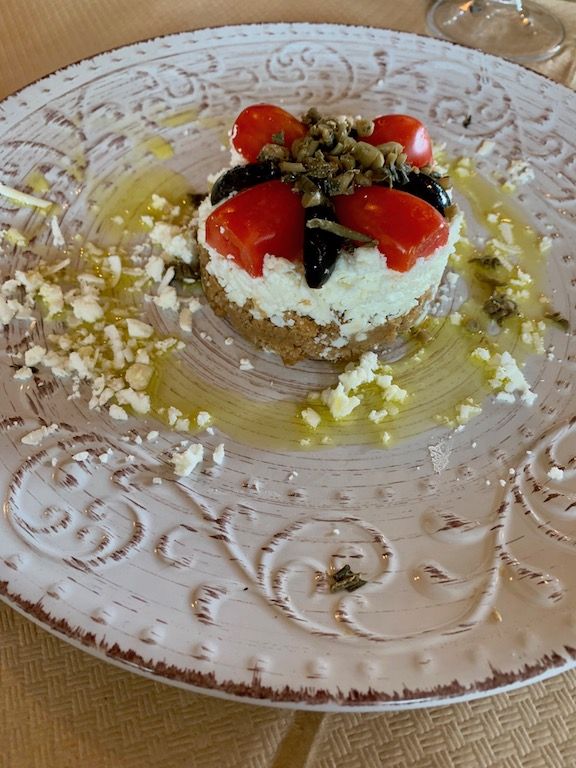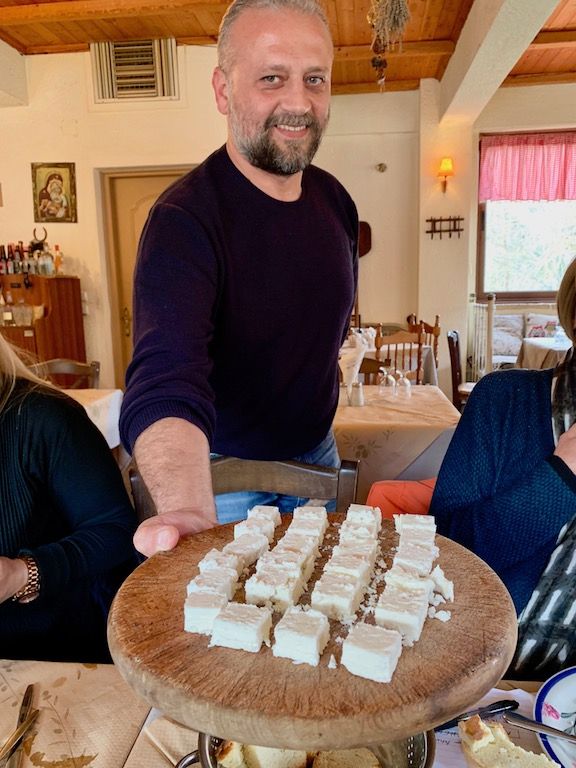When I was invited on a press trip to Greece to learn about PDO feta, trust, I gave huge thanks to Athena, and Demeter, and a shout-out to Zeus himself. It was pretty spot-on as far as media invites go, because if there’s one thing you’ll always find in my fridge, it’s feta. (And kale. And so much hot sauce. Funny how I love the three of those things together. Anyway.) I’ve been buying the feta from Lesvos (yes, Lesbian feta with a capital L!) at Rainbow Grocery for years, and I was bugging the poor cheese department at Bi-Rite Market for ages to add more feta to their case (it happened, but of course I want more). But really, there was so little I knew about feta considering how much I love it. It was time to change that!
Back in 2002, the European Union designated Greek feta with PDO (Protected Designation of Origin) status—Greece originally applied for feta to be protected under PDO status in 1994, which was accepted by the European Commission in 1996, but then Denmark, Germany, and France contested and appealed the exclusive decision. There was some back and forth (and a reversal!) until the 2002 ruling. Feta is Greece’s flagship national product, one they’ve been producing since the time of the ancient Greeks (it was even mentioned in Homer’s Odyssey!), so you can see why they wanted to protect it.
In the EU, feta can only come from Greece—sorry, no more Danish feta (made with cow’s milk, no!), or French feta, or Bulgarian feta; they had to rename what they call it (like “brined white cheese”). PDO feta can only be produced on the Greek mainland, and on three islands (Lesvos, Limnos, and Agios Efstratios). It needs to be sourced and produced according to very specific guidelines, which reflect how this product has traditionally been made. Even in Greece, if it’s a feta-style cheese, but doesn’t follow the PDO specifications (and hasn’t been certified by Elgo-Demeter, the national certification agency), it’s not PDO feta—they have to call it “white cheese.”
Feta is primarily made from sheep’s milk, or a mixture of sheep and up to 30 percent goat’s milk. No cow’s milk. Not even a drop. You should look at the ingredients of the feta you’re buying—there’s a Bay Area cheese producer that uses cow’s milk for their feta, and once you taste feta the way it’s supposed to taste, you’ll wonder why would someone use cow’s milk for feta, which also doesn’t have the fat content of sheep’s milk?! (And don’t get me started on pre-crumbled feta.)
The milk is so crucial to what makes this product special. In Greece, the milk comes from traditional breeds of sheep and goats that graze freely, and reflects the unique terroir, from the grasses to the soil to the weather. On our press trip, we visited all kinds of dairies all over the country, from artisan to large-scale, with handmade to highly automated processes, but one thing they had in common is all the milk was acquired from local farmers. It’s just the number of farms and herders they source from that shifts, depending on the size of the manufacturing operation.
Each dairy has their own arrangements for collecting the milk, with refrigerated trucks that collect it daily (sheep can be milked from one to three times daily!); Dodoni dispatches 35 trucks to pick up milk from their farmer partners daily. Some of the places we visited were very mountainous, with windy roads in extremely rural areas, so it’s not exactly a quick collection service.
After the milk arrives at the dairy, it’s tested for many things (they test for fat, protein, and pH, and they spot check to make sure no cow’s milk or water have been added, or any antibiotics), then it’s pasteurized, and then goes through an elaborate process of curdling, cutting the curds, placing them into forms or cloth bags, draining the whey, and dry salting for several days (at the dairies we visited, we always heard they used Greek sea salt). Then the feta is placed into wooden barrels (often beech), or into special metal tins filled with brine, where it’s left to ripen for at least two months, spending up to 15 days in a warmer, humid room, and then it’s moved to a cooler room when the time is right (it depends on the pH/acidity and taste).
Barrel aging is the traditional way, and will lend more complex flavor, depth, and aroma to the cheese, with a twang of sharpness, and the texture can be a touch more crumbly—I found the brine-aged versions were softer and tasted a bit more mild but still bright, and somewhat one-note and linear. It’s worth noting that barrel-aged feta will often be repacked in plastic for export, but there are some importers who get it in barrel (which can hold 50 kilos of feta or more!).
While the overall process is the same, with PDO regulations and guidelines to adhere to (including no additives, thickeners, or preservatives), there are so many nuanced touches that change from dairy to dairy. An obvious one is how much goat’s milk they prefer to use. At Kostarelos (my favorite producer—they were extremely artisan and small production, since 1937!), the amount of goat’s milk they use will fluctuate seasonally—they add it for the trademark “spice” of feta, and for whiteness—but in the summer, the milk from the free-range goats they source from in Southern Evia is very scarce. (And they said in springtime, you can really taste the herbs and chamomile.)
I’ll be writing more about Kostarelos in my upcoming Athens recap, but if you’re in Athens, be sure to visit their café and shop in Kolonaki. Their barrel-aged fetas were transcendent. At their dairy and shop in Markopoulo (just outside of Athens), we tasted feta aged for 4, 12, and 18 months, and also got to try soft feta (I will never forget how revelatory it was to taste a feta with a creamy texture that was like a crescenza or Teleme—they use different aging temperatures and less salt to achieve it, and I wish it was back in my life), as well as semi-hard and hard fetas. I had no idea feta could have such a range of flavor, texture, brightness, tang, and spice, and this was all from one producer! Someone in SF, pllllllease figure out how to import from them—they said they export to Milos and a few other premium restaurants! (You can read more about Kostarelos in this fantastic post on Culinary Backstreets.)
At A.S. Kalavryton, a cooperative we visited in the mountainous Kalavryta, they work with 1,600 farmers in the Peloponnese region, and the percentage of goat’s milk they add changes daily (usually 10 to 18 percent). We were told if there’s more sheep’s milk (which is more expensive, by the way), the cheese is softer. Texture is also determined by the temperature they pasteurize at, and the culture and rennet change the final product too—for their domestic products, they use rennet from goat’s stomach, but for export, they use a different rennet (at Kostarelos, they have their own secret family recipe for their animal-based rennet).
Kalavryton ripens their cheese in barrel for domestic sales (barrel aging is more common in the Peloponnese), while their exported cheese is in tins with brine. (See, you have to go to Greece to taste the special stuff.) During maturation, they taste the cheese every 10-12 days to determine when it’s ready, for a maximum of six months of aging. We got to visit their barrel room—with over 4,000 barrels—containing 62 kilos of feta per barrel. Here’s a fun feta fact: it takes 4.2 kilos (9.25 pounds) of milk to make 1 kilo of feta (2.2 pounds).
We visited the number one seller of feta in Greece, Dodoni (since 1963), which you are probably familiar with stateside—at the time of our visit, they said they export to 51 countries! It was a staggering operation to see, with most of it automated, but it’s still so rooted in tradition through their relationships with small farms—they collect milk daily from over 5,000 farmers in Epirus, with the diverse local plants and herbs in this pristine area adding flavor and elevating the overall quality. Click the link above for a video about the farmers and region on their website (also: cute sheep alert).
At the Roussas Dairy in Almyros, which was founded in 1952, Vice President Vassilis Roussas’s grandparents were herd owners (their forefathers are Sarakatsani, an ethnic Greek population of nomadic shepherds), and the dairy works with over 400 farmers. They prefer to only use a small amount of goat’s milk here, a maximum of five percent, and they were one of the first organic feta-makers in Greece. They also export 95 percent of their production: Mt. Vikos is their export brand to the U.S. and Canada (Mt. Athos is their brand in Australia and Asia). They’re a very innovative company, which you’ll note at their state-of-the-art production facility: their CEO, who was a mechanical engineer, developed a special machine to cut the wedges of barrel-aged feta into consistent, smaller pieces (and look at that, they’re a leader in sales of portioned barrel-aged feta).
We were taught to look for feta that doesn’t crumble when it’s cut (the sheep’s milk is what makes it so creamy), and not too many holes. It should have a tangy aroma, and freshness. Roussas barrel ages for five-six months, while they ripen the feta in brine and tins for three months. We were treated to a special tasting of Vassilis’s private reserve, tasting feta aged in barrel for one year, one-and-a-half years, and three years! (He also brought us to my favorite meal of the trip at The Giousouri, a seaside tavern in Volos that turned me on to the wonders of tsipouro, which is like a Greek grappa, and another PDO product.)
We visited Greece’s sole dairy school, the Dairy School of the University of Ioánnina, which is a free technical school for two years, and they teach 120 students annually about producing butter, yogurt, and cheese, from hard to soft. It ends up if you’re poor, from the mountains, or your family has a dairy, you have greater odds of being accepted to the school. It’s a dedicated way to ensure traditional cheesemaking methods continue. (The founder of Stani Dairy in New Jersey is a graduate.)
When we visited the school, we got to see the students make graviera cheese, and taste fresh talagani cheese, a cheese from the Peloponnese that is cooked in whey, and then sliced open and given a layer of salt and pepper and green peppers (like pepperoncini) inside, and then mint is added to the outside—you can fry it up like halloumi. We need this in California.
An ideal finale of the weeklong trip was our meal at Mia Feta in Thessaloniki, an innovative restaurant and retail shop from Kourellas, a dairy based in the mountains of Grevena that has been family-run since 1960. They were the first organic dairy in Greece (in 1996!), and they export 85 percent of their production to 24 countries—yes, the U.S. is one of them. They have an extensive line of dairy products, which includes a few versions of PDO feta, five other PDO cheeses, innovative snacking cheeses, yogurts, kefirs, milks, and more. I was ready to buy their entire deli case and ship it home.
While in Thessaloniki, we attended a cooking class with the delightful Smaragda Makri at her cooking school, Marmita. She taught us how to make feta, walnut, and date phyllo pastry cigars; spring vegetable risotto with feta; couscous salad with sun-dried tomato and feta; shrimp saganaki, poached in tomato sauce (soooo good, I have to make it again); and kataifi with feta for dessert. Each dish was fantastic—the best souvenirs of a trip are sometimes a dish or two you can recreate at home. I’ll be writing more about Thessaloniki, but I wanted to make sure to mention her charming cooking lab, and she also leads wonderful culinary tours (Eat and Walk). You’ll want to spend as much time as possible with her!
Where to find PDO feta in SF
It’s time to start tasting some different PDO feta brands, maybe track down some barrel-aged versions to compare, and hone in on your favorite. Be sure to look for the yellow-and-red badge on the package to confirm it’s PDO!
Rainbow Grocery
Try the sheep’s milk Lesbian feta (from Lesvos)! It’s from Essex Street Cheese, and is such a special, artisan product. So creamy. (Although I hear it’s been out of stock this summer, but hopefully should return soon.) In the meantime, they have the Mt. Vikos barrel-aged PDO feta, sold as “Greek feta” on their shelves.
Chico’s Market
This friendly Russian Hill and Greek-owned corner grocery carries organic Epiros (a very creamy PDO feta, with both a soft texture and lightly tangy taste), and the well-known Dodoni (also PDO!), and a number of other Greek cheeses (like myzithra, Cypriot halloumi), Greek spirits and wines (and beers: Septem and Fix!), and some cool products, like rosemary lamb salami, mountain tea, honey, and all kinds of Greek pantry items.
The Argentum Project
This awesome Greek café in SoMa also carries Epiros and Dodoni, plus a bunch of Greek products, extraordinary house-baked goods (with feta galore!), sandwiches, an honest-to-goodness frappé, and more! Read my previous article on this gem of a shop here.
Cheese Plus
They carry Kourellas barrel-aged feta and Mt. Vikos barrel-aged feta in brine, and the Lesbian feta from Essex when it’s available. While you’re at Cheese Plus, check out their quality pantry items, like their Greek olive oil and spices.
Bi-Rite Market
They carry the Lesbian feta from Essex Street (when it’s available!), as well as Mt. Vikos barrel-aged feta, and they now carry Kourellas barrel-aged and organic PDO feta as well.
Whole Foods
They carry Kourellas barrel-aged feta and look for Mt. Vikos barrel-aged feta in brine.
Greek Imports
This old-school store in Daly City has barrel-aged PDO feta (Zeria) from the Peloponnese at the deli counter, as well as Dodoni, Epiros, and feta from Divanis. You’ll walk out with more than you planned on getting here, there are all kinds of discoveries to be had.
How to store feta
After you open it up, if your feta didn’t already come in brine, you need to make your own, otherwise the feta will dry out and it can also sour quickly. You don’t want to make your brine too salty (or not salty enough), it will affect the taste of your feta! I follow this advice from the sage Janet Fletcher: “Whether it’s aged in a barrel or a tin, feta matures in a brine that’s 6 to 7 percent salt. The feta itself (minus the brine) is just under 3 percent salt. Store it in a brine that’s somewhere in between. A 5 percent brine would be 2 tablespoons plus 2 teaspoons salt dissolved in 1 quart water.” (That link also has some feta recipes and food highlights from our trip!)
How I like to use feta
I always have feta around because it’s easily applicable to so many dishes. I usually use feta in my omelets and scrambles, and I love occasionally treating myself to a decadent, open-faced egg tartine with feta: toast a slice of cracked wheat bread, drizzle the slice with a peppery olive oil, top with thin slices of feta, oregano, and a fried egg, which I finish with Aleppo chile, salt, and cracked pepper (shout-out to Roberta Economidis for the original inspiration on this one). It’s the best hangover buster. In the summer, I’m a fan of making a tomato bruschetta for breakfast (with spicy olive oil but no garlic), and topping it with feta and oregano.
When you’re buying the good stuff, it’s brilliant on its own with a drizzle of olive oil and oregano, maybe add some figs, honey, and dates to complete the Mediterranean picture. Of course, you can use it in all kinds of salads (it’s so good with watermelon and mint), and I’m known to sprinkle some over soups for a little acidic tang, or stir it into whatever pasta combination I’ve cooked up at the last minute for a little creamy brightness. (Feta on top of a risotto, do it.)
I’m currently loving this lemony whipped feta dip, which I’ve also been using as a spread in sandwiches, and with these turkey-feta burgers I make every summer. Roasting feta is one of the easiest appetizers, jus’ sayin’. (Check out what Plagios—a modern restaurant in Volos we visited—did with pink peppercorns for more appetizer inspiration.) If you’re wondering what to serve with it, feta pairs well with sauvignon blanc and sparkling wine (yay)—or some retsina, of course. Yamas!
Feel free to write me back with any of your favorite feta recipes, sources, and more! The feta fanatic club always has room for more members.
If you want to see more pictures and notes, I posted a bunch of pics on Instagram in March 2019, starting here.
